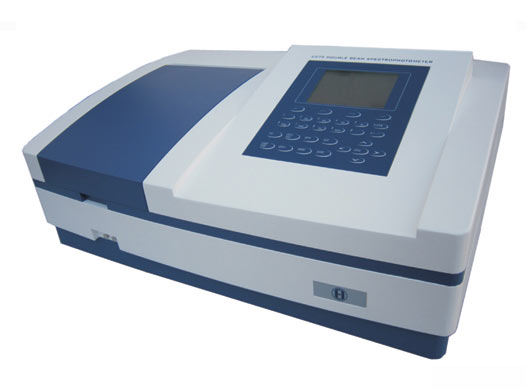According to the transparency market research, the global process spectroscopy market was US$ 714.5 million in 2012 and is expected to reach a value of US$ 1179.6 million by 2019 growing at 7.41%. In this growing market, most equipment in the past was bulky, expensive, and limited to laboratories. However, with recent technological advances such as robust CCD detectors, MEMS chips, and miniaturized lenses, spectrometers are getting smaller and cheaper.
The theory behind the spectrometer is spectroscopy which is a technique used to identify and determine the physical characteristics of materials through the measurements of emissions and absorption of electromagnetic spectrum. Nick Morris has examined the future directions of spectroscopy, recent cutting edge technologies of spectroscopic measurements, and its applications in his recent report to Europa Science Network. Ocean optics has developed application oriented spectrometers: education and laboratory purposes, absorption type, reflection type, and law stray light with high sensitivity. Currently, an ocean optics spectrometer is being used to monitor Sulphur dioxide levels near to a volcano. The Avantes spectrometer with Bluetooth units allows data transmission wirelessly and suggested that this could measure the progress of food ripening. Phazir, a small handheld spectrometer developed by Polychromix is being using for material identification and it has been identified its potential to use for crime scenes.

The portable mid-infrared Fourier Spectrometer and specification
Most recently, consumer physics has developed a handheld device that pairs with smartphones through Bluetooth for identifying food, medicine, and plants and it is known as SCiO. The SCiO needs different smart phone apps for three areas: food, medicine, and plants.
Advancing the technology further, researchers in Kagawa University, Japan have developed a novel spectrometer using the new spectroscopic method called the imaging type two-dimensional Fourier spectroscopy. Because the imaging-type two-dimensional Fourier spectroscopy is the near-common-path interferometer, the strong robustness to the disturbance inside the optical system is a huge merit. Because this optical system does not use the reference light, the optical equipment can be constructed as in a simple structure with a high portability. Furthermore, based on the imaging optics, this spectroscopic imaging secures a high spatial-resolution.
In comparison to conventional methods, this method is capable of limiting the measurement depth onto the focal plane. The conventional FTIR which is configured with Michelson interferometer is the amplitude division interferometer. Here, an incident beam is divided into two beams by the half mirror and those beams are reflected by the mirrors, and then recombine. The interference phenomenon occurs within a ray.
As imaging type two-dimensional Fourier Spectroscopy is a wave front division interferometer, where two beams are crossed and the interference occurs at the point of intersection. Only the beams emitted from the focal plane, interfere each other on the imaging plane. Even if the beams are emitted from the out-of-focal plane, the amplitude division interferometer such as FTIR can observe the interference phenomenon on the imaging plane due to the interference of beams. The big plus point of this method is that it cannot observe the interference phenomenon due to beams that come out of the focal plane. So, the rays emitted from the out-of-focal plane cannot interfere and the Imaging type two-dimensional Fourier spectroscopy can limit the measuring depth into the focal plane only. Therefore three dimensional spectral characteristics can be obtained by scanning the focal plane mechanically.
Professor Ishimaru and his team have introduced two versions of portable spectrometers and one which was developed based on time domain analysis is shown below. The Germanium lenses which have high transmission in the mid-infrared region are used in the optics. The microbolometer (Maker: FILR, Type: Quark 336) is used as the 2 dimensional imaging sensor. The variable phase shifter is actuated by the low-price bimorph type long stroke actuator (Maker: Technohands CO., Ltd, Type: TULA XDT50-045, Stroke: 4.5mm). This spectrometer is a near-common-path phase-shift interferometer with the strong robustness against mechanical vibrations. So, this has been constructed as simple optical configuration without anti-vibration mechanism. From the above reasons, the low-price, compact, and high portability spectroscopy apparatus has been achieved.
This portable equipment can be used for environment measurements and health monitoring. Recently this unit has been used with a drone, and experiments have been conducted to take measurement from air. They demonstrated the effectiveness of this small spectrometer in the air by measuring Carbon dioxide concentration and the amount of water vapor. According to Professor Ishimaru, "A drone that flew with a spectrometer would be the first time in the world. You can analyze the occurrence of toxic gases from the sky at the time of disaster and it is also possible to measure the moisture content of the soil or help to the alarm of earth and sand collapse ." In addition to that, this unit can be used for forensics expert technologies (ink measurements).

Improving further, the research team of Ishimaru laboratory has developed an even smaller unit replacing the variable phase filter by a relative-type phase-shifter. This filter has a reference mirror and a tilt mirror; thus, the relative phase-difference between the half fluxes of objective beams is given.
The diameter of the unit is just 10 mm and 50 mm long. Prof. Ishimaru is planning to develop this unit as a smart phone spectrometer where people can measure daily food content, or amount of calories in their food.
Both these units will revolutionize the spectroscopic field by bringing the technology to people’s life. Millions of diabetic’s patients around the world will feel the comfortability of knowing their blood sugar level daily. Disaster prevention and prediction will direct to a new way. These affordable technologies will come to your hand in near future. Technologies are evolving, there is no limit for it.
